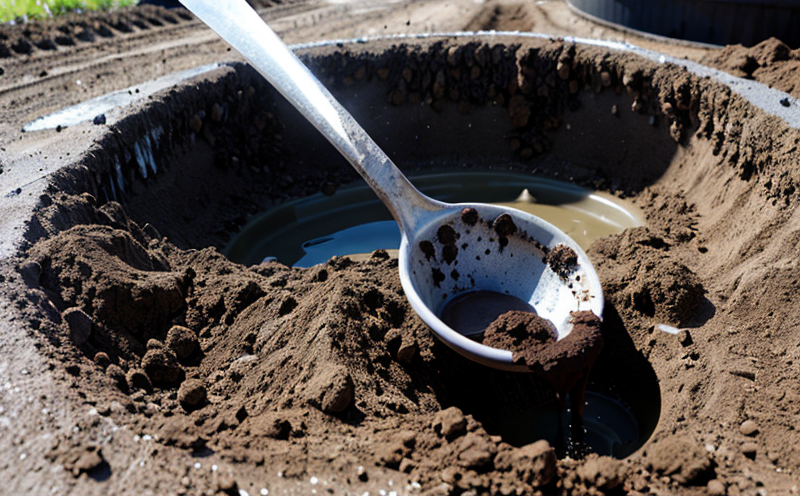EPA 8260 Volatile Organic Compounds in Sludge Test
The EPA Method 8260 is a comprehensive analytical procedure designed to identify and quantify volatile organic compounds (VOCs) present in sludge samples. This method, which is part of the broader suite of regulations governing solid waste management, ensures that landfills receiving biosolids undergo stringent testing to determine the presence of hazardous VOCs.
The importance of this test cannot be overstated, especially for facilities handling wastewater treatment residuals and biosolids. The test aims to safeguard public health by preventing the release of harmful compounds into the environment. By adhering to EPA Method 8260, laboratories ensure that biosolids comply with regulatory standards set forth in EPA regulations.
The test involves several stages, including the collection and preservation of sludge samples. Samples are collected using sterile techniques to avoid contamination and then transported to the laboratory for analysis. Once received, the samples undergo a series of derivatization steps to convert non-volatile compounds into volatile forms that can be detected by gas chromatography–mass spectrometry (GC-MS).
The EPA 8260 procedure is divided into multiple parts, each addressing different types of VOCs. For instance, part A focuses on the determination of halogenated solvents and aromatic hydrocarbons, while part B covers aliphatic hydrocarbons and other non-aromatic compounds. These classifications are crucial for identifying potential sources of contamination and assessing risks associated with land application.
The use of GC-MS in this method provides high sensitivity and selectivity, allowing for the detection of trace amounts of VOCs even in complex matrices such as sludge. This advanced instrumentation ensures reliable results that can be relied upon for regulatory compliance.
Compliance with EPA Method 8260 is mandatory for facilities generating or managing biosolids. Failure to meet these standards could result in fines, legal action, and reputational damage. By offering this service, we help our clients navigate the complexities of environmental regulations and ensure their operations remain compliant.
Environmental and Sustainability Contributions
- Reduction of hazardous VOC emissions into the environment.
- Promotion of sustainable waste management practices by ensuring biosolids are land applied safely.
- Supporting regulatory compliance which minimizes risks to public health and the environment.
Why Choose This Test
The EPA 8260 VOC test is essential for facilities involved in wastewater treatment and biosolids management. By choosing this service, you ensure that your operations meet stringent regulatory requirements set by the Environmental Protection Agency (EPA). Our laboratory uses state-of-the-art equipment and highly trained technicians to provide accurate and reliable results.
Our comprehensive testing ensures that all potential VOCs are identified and quantified, providing peace of mind regarding compliance with environmental regulations. This service is particularly beneficial for quality managers, compliance officers, R&D engineers, and procurement professionals who need to ensure their processes meet regulatory standards.
The test results can be used for various purposes, including operational optimization, risk assessment, and compliance reporting. By identifying potential contaminants early in the process, you can take proactive measures to mitigate risks and avoid costly penalties.
Customer Impact and Satisfaction
Our clients benefit significantly from our EPA 8260 VOC testing service. By ensuring compliance with regulatory standards, we help facilities manage biosolids safely and effectively. This not only protects public health but also minimizes the environmental impact of waste management practices.
We understand that compliance can be challenging, which is why we offer a range of support services to help our clients navigate these requirements. Our team provides detailed reports that outline the results of each test, along with recommendations for any necessary corrective actions. This level of support ensures that you have all the information needed to make informed decisions about your operations.
Customer satisfaction is at the heart of everything we do. We pride ourselves on delivering accurate and reliable results in a timely manner. Our commitment to quality has earned us a reputation as a trusted partner for facilities across North America, including municipal wastewater treatment plants, private waste management companies, and research institutions.





